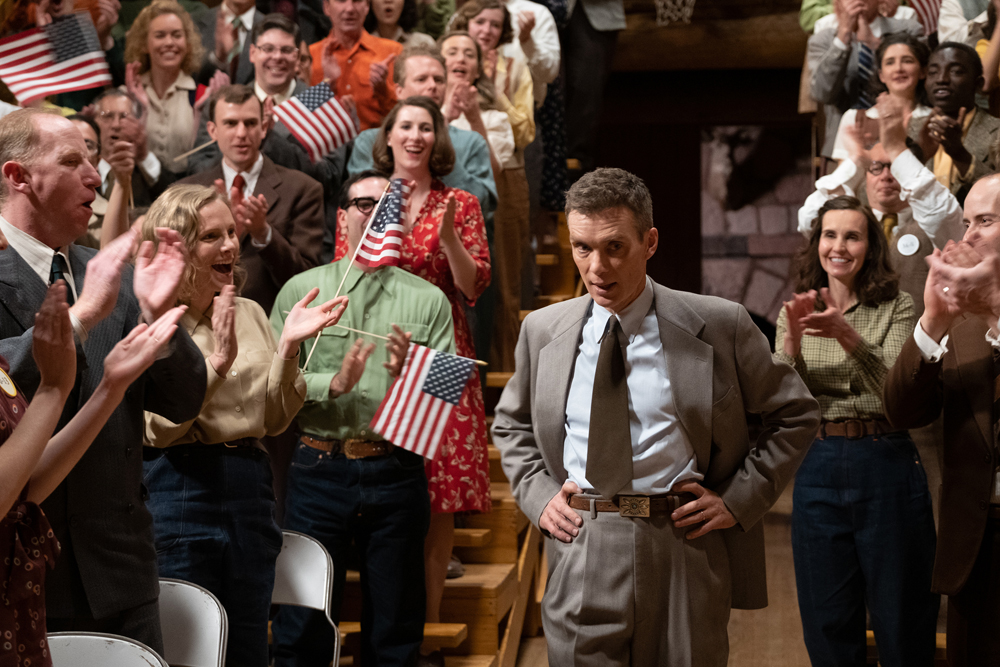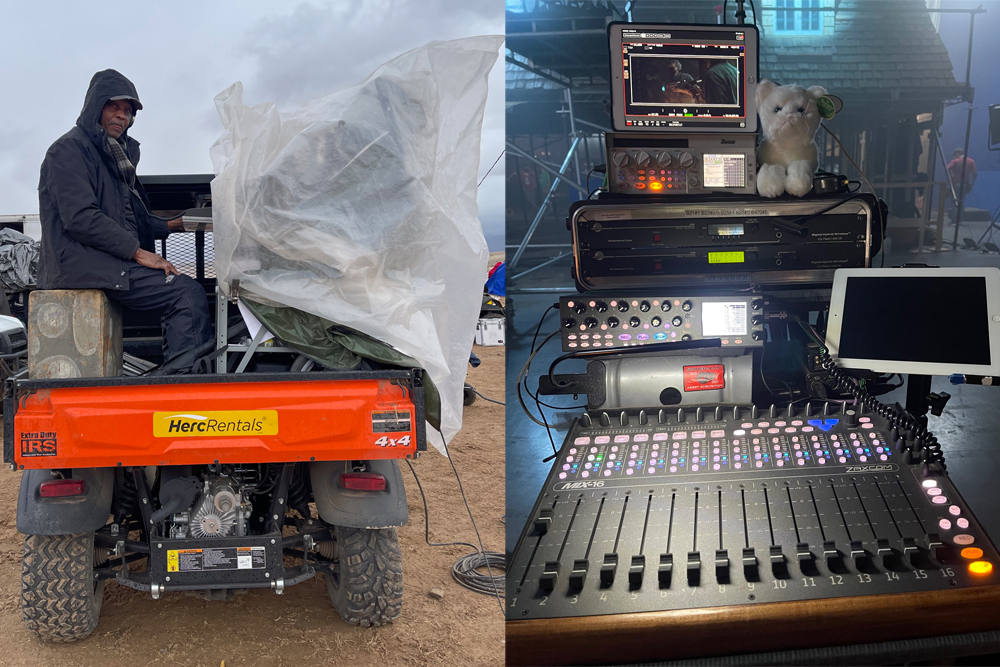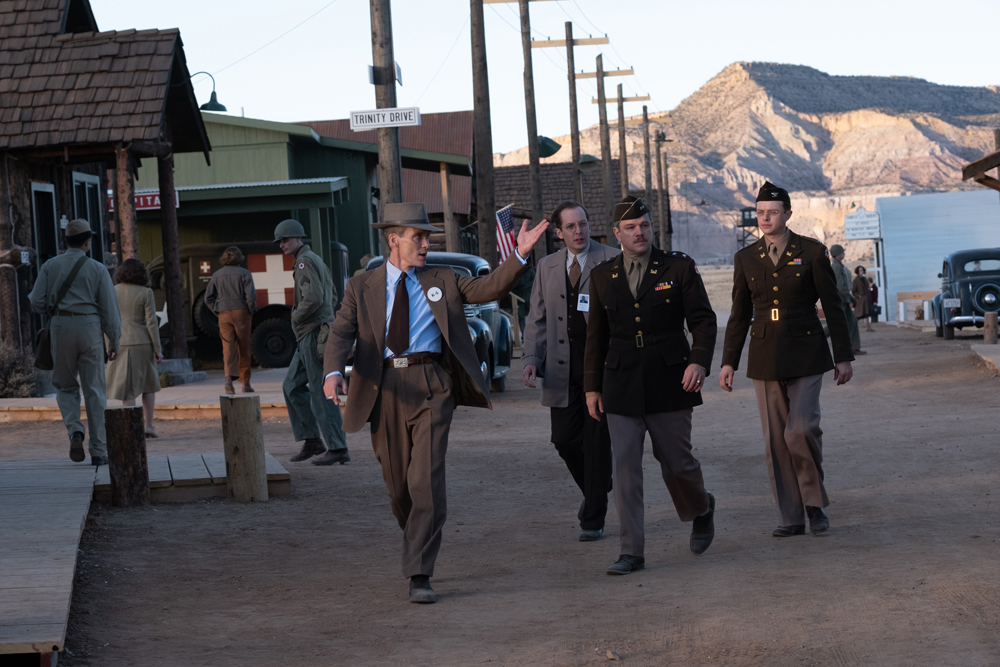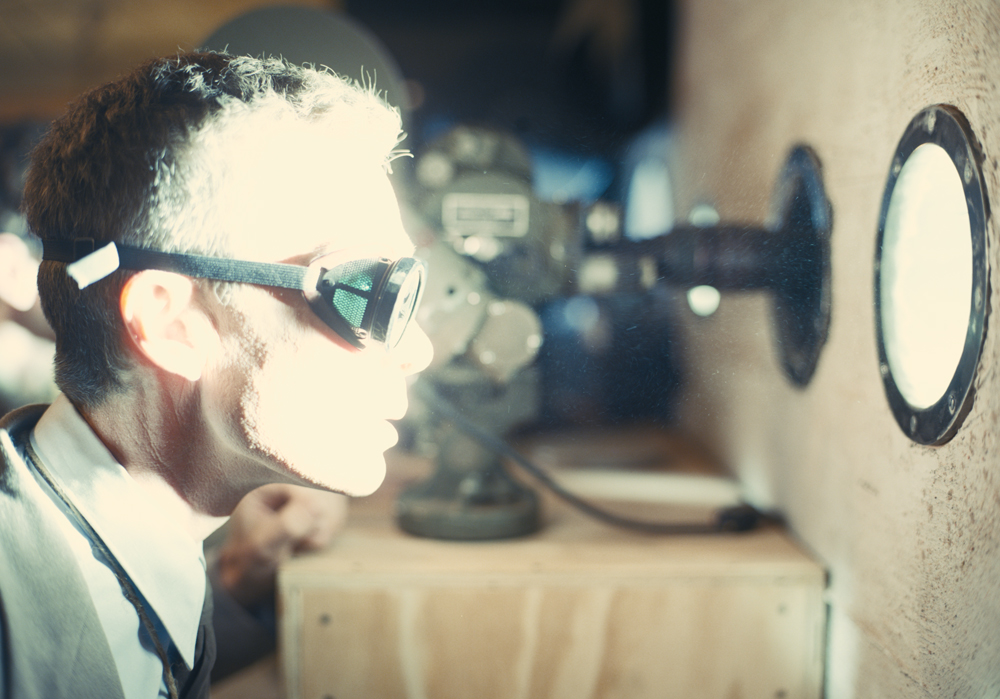
There’s a scene in Christopher Nolan’s Oppenheimer following the success of the Trinity test where the physicist, brilliantly portrayed by Cillian Murphy, addresses a thunderous crowd who is clapping and rhythmically stomping their fight. There’s an uncertainty growing on Oppenheimer’s face as he stands at a small wooden podium before struggling to say, “The world will remember this day.” The mob roars in response. But it’s a telling moment, one where Oppenheimer realizes he may have altered the course of mankind. For production sound mixer Willie Burton, who previously collaborated with Nolan on the time-bending film Tenet, recording the scene became an influential aural theme in the pulsating biopic which grossed nearly 1 billion dollars worldwide.
“The stomping can be heard throughout the movie so it really becomes a character,” says the two-time Oscar winner. In approaching the lively scene Burton placed multiple microphones around the room. Some close to the actors’ feet, others further away to capture every dynamic detail. “You may think a scene like this is not a big deal and you might be able to cover it with one microphone, but knowing Chris, we gave post a full track with 6-8 microphones to create that incredible moment.” The final mix of the sequence creates a soundscape filled with tension, dread, and uncertainty. Supervising sound editor Richard King said, “Chris wanted the scene to segue from a jubilant victory celebration to a nightmarish and nauseating one as Oppy visualizes the horror of it all.” It was one of many sonically impactful moments the sound team, which included rerecording mixers Gary Rizzo and Kevin O’Connell and composer Ludwig Göransson created for the stirring epic.
Burton’s production sound career spans decades, recording some of the most influential films from the last forty-plus years. The Color Purple (1985), Bird (1988), Indiana Jones and the Last Crusade (1989), The Shawshank Redemption (1994), Se7en (1995), The Green Mile (1999), and Dreamgirls (2006) among them. His early days of recording production sound to analog tape transitioned into digital after becoming an early adopter of the Zaxcom Deva. Today, Burton still uses Zaxcom equipment to create his harmonic multi-track mixes.

For Oppenheimer, and recent projects F9: The Fast Saga, Spider-Man: No Way Home, and Air, the Ben Affleck and Matt Damon film about the rise of Nike, his setup includes a Zaxcom Mix-16 Control Surface and the Deva 24, a 24 track mixer-recorder featuring all the latest tools (ZaxNet, NeverClip, PowerRoll, and MixAhead) which help to make a production mixer’s job on set seamless.
“I was thinking about going in a different direction but I have been with Zaxcom for so long. I’m in love with the Deva 24 and Mix-16. They’re good machines and of great quality so I thought why change. Plus, Glenn [Sanders] at Zaxcom is an amazing person. He comes up with best equipment which makes my job a lot easier.”
The Zaxcom gear was put to the test on the dialog-driven dramatic biopic. “After reading the script I was happy Chris wanted me involved in the project because I thought we could do something really great with all the dialog,” notes Burton. The story is based on the book American Prometheus by Kai Bird and Martin J. Sherwin. Nolan and cinematographer Hoyte van Hoytema unravel a narrative through the perspective of Oppenheimer with converging storylines: one where the physicist is building the bomb, another being the aftermath where Oppy faces questioning over the security of the project, and a third that centers on Lewis Strauss (Robert Downey Jr.) who plays a role in America’s nuclear policy post WWII. President Dwight D. Eisenhower has nominated Strauss to serve as Secretary of Commerce. Nolan combined IMAX 65mm and 65mm large format film, shooting scenes with Oppenheimer in color and, for the first time, IMAX black and white for scenes with Strauss.
For scenes when Oppenheimer is being interrogated or inside the Senate chambers with Strauss, Burton planted wired microphones to record all the actors’ dialog and placed other mics to record ambient sound. “The boom is always working but we will have live dynamic mics in front of actors that way Chris has different choices,” says Burton. “I’ll have everything on ISO tracks so editorial can go to that track later but I’ll mix scenes to match the camera and how they’re supposed to sound.”

During production Burton and boom operator Douglas Shamburger traveled to different parts of Los Angeles (Adam Mohundro worked second boom in LA) and New Mexico. The latter is where they faced harsh elements recording sound. “The weather can be difficult in New Mexico,” notes Burton. “You’ll always get wind even when it’s hot or cold. But it is what it is and we do what we have to do.”
The two main attractions in the Land of Enchantment were the creation of Los Alamos, the infamous site of the Manhattan Project and the Trinity test site. Though some structures of the real 1940s Los Alamos location have been preserved, modern buildings have sprouted up making it more costly to remove them via visual effects. Production designer Ruth De Jong looked to Ghost Ranch, a 21,000 acre retreat in the northern part of the state to construct the small city. However, most of the interior scenes were still filmed inside the original Los Alamos buildings. Burton says the scale of the Ghost Ranch sets were “pretty incredible” and his team was able to improvise any potential sound issues like placing carpet on hardwood floor as they went along.
Burton and Shamburger recorded the majority of the New Mexico exteriors on the Schoeps CMIT-5U paired with a hardline XLR cable instead of using wireless transmitters or wireless boom. “Chris is not about using radio mics so we have to really figure out how to do this with a wired boom,” notes Burton. “The CMIT was the choice microphone, but with a wire, it means running cable around the set. We’d have to run up to 300 feet of cable to get where we are going at times and keep it out of the shot. It is how we used to do it years ago and my team knows how to do it to get the best sound quality.”
The old school filmmaking style is something Burton enjoys. “It makes you stay on top of your game and anticipate those last minute things,” he continues. “Chris doesn’t want to loop or do ADR. He wants to use all his original sound. Knowing that, we fight for the sound, and when needed, Chris gives us another opportunity if a line doesn’t come through clean. That’s the kind of working relationship we have together. You can work with directors who say we don’t have time or we have to move on. Chris is not like that. We take the time to do it right. I learned from Tenet that he’s not a director to rush through things and move on.”

Though the original Trinity test took place at White Sands Proving Ground, a location Nolan received permission to shoot at, production instead built its version in Belen, New Mexico. The climactic sequence has Oppenheimer inside a bunker where a team is preparing for the historic blast. In capturing the sonic detail sound used Sennheiser MKH 50 microphones for moments inside the bunker as Burton finds the microphone to be a “little softer.”
When the countdown hits zero, a mushroom ball of flame climbs into the sky, and sonically, only hints of breathing and score can be heard for 1 minute and 42 seconds as editor Jennifer Lame cuts around reactions from onlookers. Oppenheimer eventually murmurs, “Now I am become death, the destroyer of worlds,” a line from the Hindu text the Bhagavad Gita as he stares out from the bunker. Then suddenly. Bang! The shockwave from the detonation hits with unbelievable force shaking the bunker at its core. King said the idea was to make the Trinity test explosion “to be a sound unlike any other explosion” and for the post team to “create a suspended moment” that heightened the scale and intensity of the blast.
It’s a moment Burton got to experience fully watching the final film. “I was amazed how Chris and the post team put that together. Seeing the scene and hearing the way the music and the sound effects were done was incredible. There’s such a creative process with Chris during production but with post as well. Chris and the whole team did an incredible job. We’re all really proud of this film.”